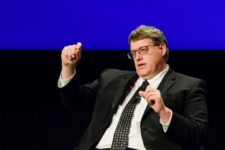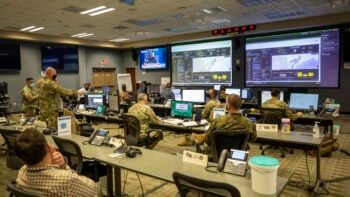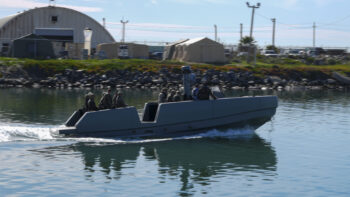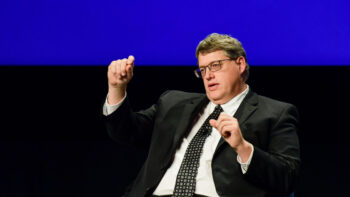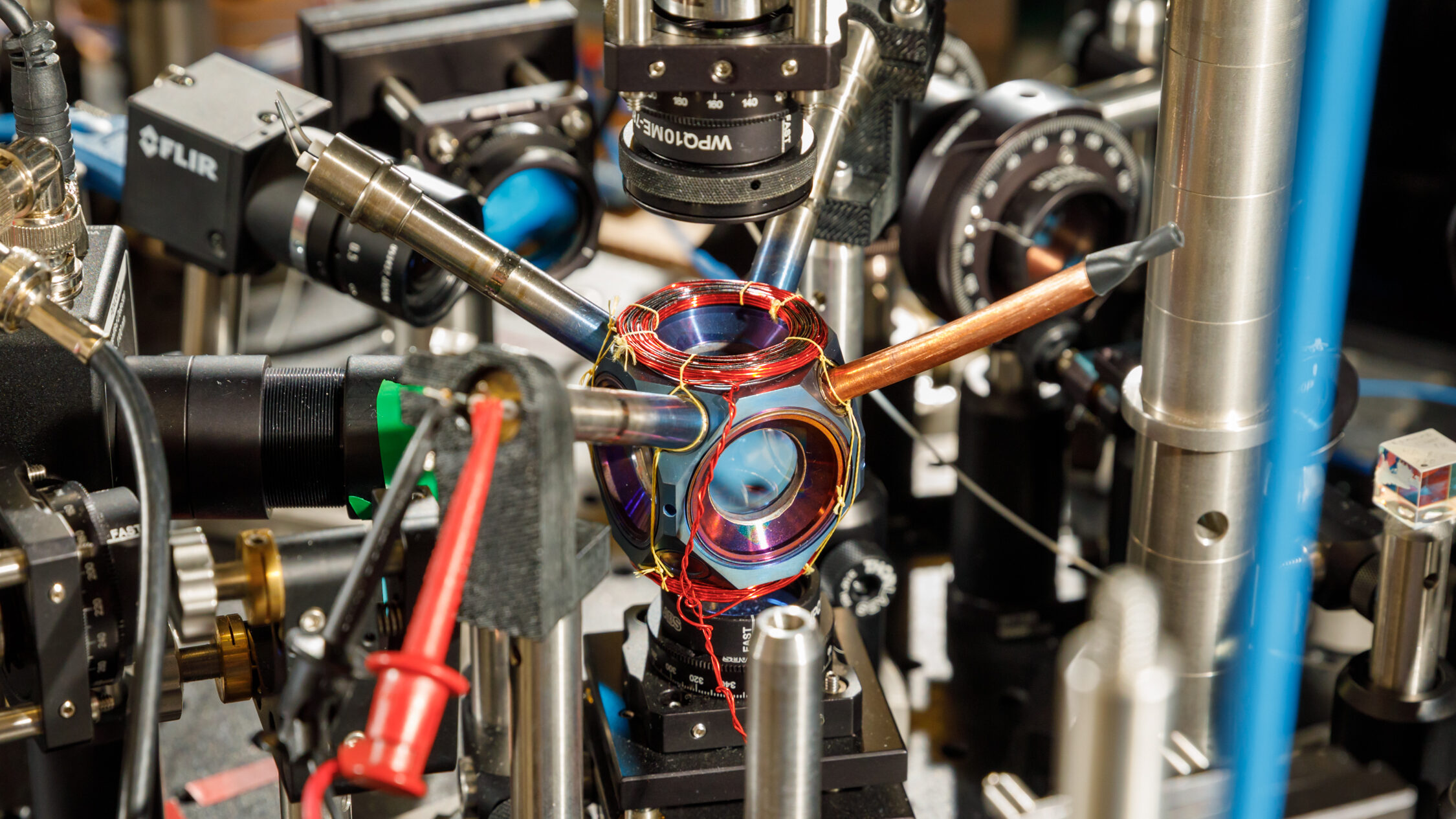
A compact device designed and built at Sandia National Laboratories could become a pivotal component of next-generation navigation systems. (Photo by Bret Latter)
WASHINGTON: Sandia National Laboratories has developed the core technology needed to create small enough quantum sensors to potentially free the US military (and civilians around the world) from reliance on GPS satellites for way-finding, according to lab officials.
The first-of-its-kind device, a passively pumped vacuum chamber for containing clouds of atomic particles that drive quantum sensors, is about the size of an avocado, according to an Oct. 26 news release from the Albuquerque-based US nuclear research lab. Sandia scientist Peter Schwindt told Breaking Defense that while lab researchers hadn’t weighed the device, “If I had to guess, it is less than one pound.”
That is small enough to enable highly accurate quantum positioning, timing and navigation (PNT) systems that in the future could be carried on vehicles, aircraft, satellites or even soldiers’ backpacks — providing an alternate, or even a replacement, for Global Positioning System satellites, which use highly accurate atomic clocks for PNT measurements. Quantum sensors, based on lasers, already are being tested in laboratories around the world, but Schwindt cautioned that there is still development work — not just on vacuum chambers — to be done to be able to use them as replacements for GPS.
“Quantum sensors are a growing field, and there are lots of applications you can demonstrate in the lab,” explained Sandia postdoctoral scientist Bethany Little, who is contributing to the research. “But when you move it into the real world there are lots of problems you have to solve. Two are making the sensor compact and rugged.”
Military leaders, especially within the Army, are ever-more worried about losing access to GPS signals on far flung battlefields, whether from enemy jamming, friendly interference from the plethora of electromagnetic spectrum using devices now equipping modern weaponry, or simply environmental conditions that block signals from reaching receivers.
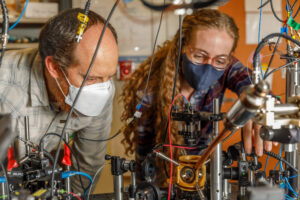
Sandia National Laboratories scientist Peter Schwindt, left, and postdoctoral scientist Bethany Little examine the vacuum package held in a yellow, 3D-printed mount. (Photo by Bret Latter)
Quantum sensors for PNT use atomic accelerometers or gyroscopes that “measure acceleration and rotation by shining lasers into small clouds of rubidium gas” contained in vacuum chambers. Such sensors already exist but “they’re too bulky and power-hungry to use in an airplane’s navigation system … because they need a large vacuum system to work, one that needs thousands of volts of electricity,” the release says.
A vacuum chamber is a key component, trapping the rubidium atoms and keeping out other types of gasses that would mess up the finely tuned measurements made by the lasers. But rather than using electrical power for the pump that maintains the vacuum, Sandia’s novel solution was to use chemical reactions to bind “foreign” gasses.
The device itself further has “walls” made from titanium and sapphire — a process that required complex construction methods similar to those used by Sandia to build nuclear weapons components — that also serve as barriers to contaminants.
Sandia’s “avocado” has been running for a full year, proving that high-powered vacuum systems are not necessary for reliable quantum sensing. The goal, according to the release, is to keep it “sealed and operational for five years, an important milestone toward showing the technology is ready to be fielded.” (Despite the comparison to an avocado, Schwindt said lab scientists haven’t given the vacuum chamber a cute nickname, yet.)
While Schwindt said that the device could be used as it is, it really “needs some more development.” Two factors would limit it current use, he explained, “background vacuum pressure and the power consumption.”
“We need to study if there are techniques to reduce the pressure at a lower temperature that reduces the power consumption and lowers the background pressure,” he said.
Nonetheless, he added, “technology transfer of the vacuum package could happen in a year or so if needed.”
Schwindt said that the lab moves new tech into the real world via its Technology Transfer Office. “And we would be interested to transfer the technology. We want to see our research used!” he said. “While many have congratulated us on the result, we have not been approach yet for technology transfer.”
Services making progress putting the J in CJADC2: Vice Chief Grady
Adm. Christopher Grady, vice chair of the Joint Chiefs of Staff, said the Joint Requirements Oversight Council is “well on pace” to putting more “teeth” into its processes for driving the military services to fulfill joint requirements.






